#Forgotten Tribal Culture
Text
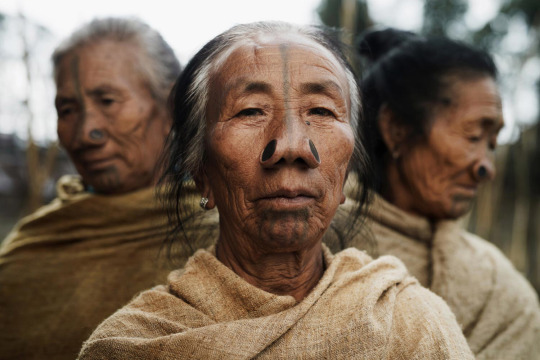
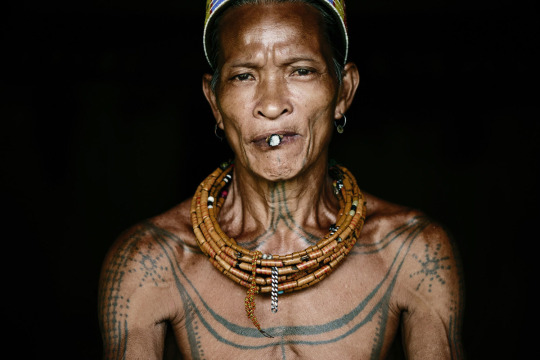
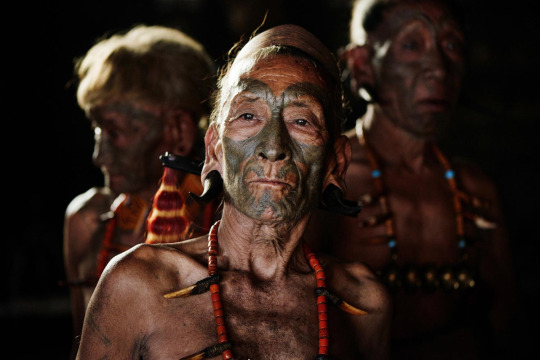
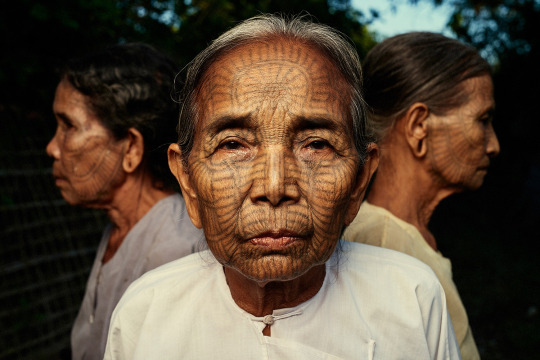
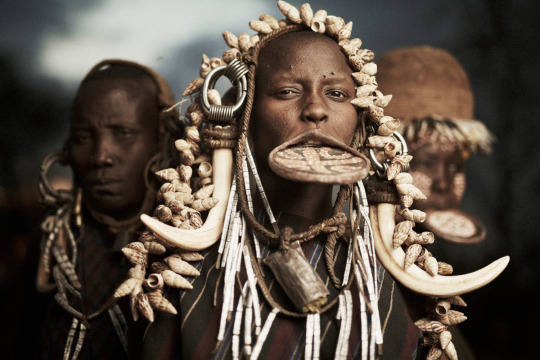
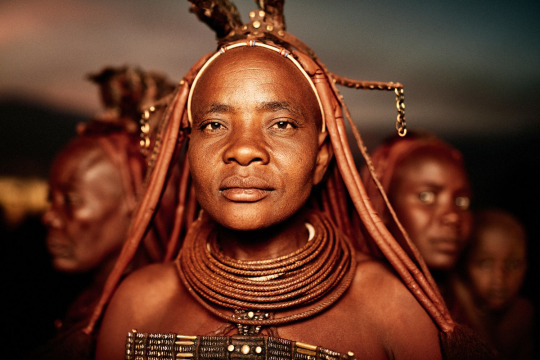


Forgotten Tribal Culture by Adam Koziol 🤎
Adam Koziol is a photographer based in Poznan, Poland. In 2013, during a trip to Borneo, while talking with one of the representatives of the Iban people (the People of the Dayak group in East Malaysia, Indonesia and Brunei), he realized that 3000 years of culture and traditions are doomed to disappear in the coming years. So he decides to start a documentary project to tell about these forgotten and doomed tribal cultures.
#travelingwithoutmoving#naturephotography #naturelovers #naturelover #natureshots #naturegeography #naturephotographer #nature_perfection #naturephoto #natureaddict #naturegram #nature_brilliance #natureonly #naturephotos #naturelove #naturepic @darksilenceinsuburbiareloaded @dakota-283 @wetwicksdry #naturehippys_ #naturepics #naturebeauty #natureperfection #natureshooters #naturelife #naturephotograpy #nature_of_our_world #natureporn #natureseekers #nature_lovers #natureinfocus
Soundtrack: What A Wonderful World by Louis Armstrong
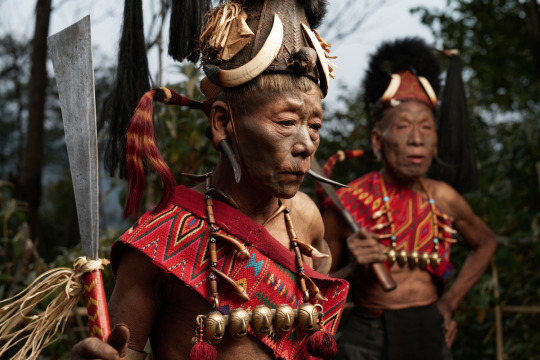
#l o v e#earthlings#old knowledge#old cultures#7/2023#Adam Koziol#Forgotten Tribal Culture#Forgotten#Tribal Culture#back to the basics#spirituality#everything is connected#african culture#asian culture#photographer#traveling#travelingwithoutmoving#Asia#africa#south america#x-heesy#music and art#photo jouralism#native#natives#bloody history#body cult
178 notes
·
View notes
Text
Various Predators x Predator! Reader (IV)
@avaleigh16 asked (a very long time ago, sorry for the wait!!) for a fourth part to the Predator saga, where Reader is brought to Yautja Prime. Therefore I bring a potential sequel that focuses on Predator culture, depending on who you’ve chosen as your partner!
[Part 1] [Part 2] [Part 3] [Horror Masterlist]
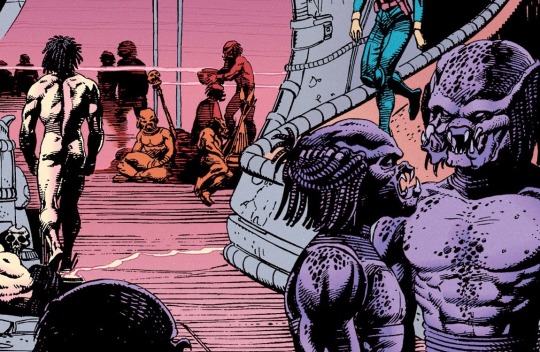
Feral Predator
As promised, your new home didn’t stray much from your expectations. Feral Predator is from a different hemisphere, of a drier climate. The imposing, sprawling megalopolis of Yautja Prime is but a distant outline, fading before the marvels of raw, unforgiving nature this place has to offer. Tribal architecture and interminable tunnels are the prominent features of these ancient cities. One has no need for advanced technology. In a way, it does remind you of Earth, of your modest countryside roots. Communities are made of small family units, so days are spent hunting or training in the company of your partner. Feral Predator is a patient and caring father, guiding his offspring and showing them the ropes of survival. There will be frequent visits to Earth as he, too, favors its wilderness, especially when it comes to honing one’s skills. While he treats you as an equal, he does hold you in significantly high regards as the mother of his children.
Elite Predator
With great status comes great responsibility. Elite Predator has been eyeing the Elder status for some time now, in order to provide you with one further reason to be grateful for choosing him. That implies, naturally, that he is often on special missions to teach or rescue Young Bloods, or clear out Alien infestations. Your offspring will go through Spartan training as soon as they can crawl their way around: it would be shameful if his own younglings end up weak or devoid of skill. Although he does not worry about such outcome. He hasn’t picked you out of random chance. Only someone of his level could’ve made it as his mate, and he was certain of it from the moment he saw you. Hopefully you, too, can tell that this outcome was fated to happen. You most certainly won’t regret your life with him, he will make sure of that.
Fugitive Bad Blood
If you were hoping for an idyllic, peaceful life in a humble hut with ocean view, I have some bad news for you. Even settling on Yautja Prime is an optimistic stretch when your partner is a criminal on the run. You’ve unwillingly followed in the footsteps of your parents, watching your child grow from within the confinements of a ship, sailing through space with no ultimate goal. Not all is grim, however. Despite his ruthless nature, the Fugitive has kept his word when it comes to being a fitting partner for you. Your wish is his command and he will not allow anything endanger his family. To your great shock, he’s even willing to take risky detours on Earth whenever you feel particularly nostalgic. He will stare at you incredulously; why the hell would he have gone through all the efforts to court you if he didn’t want you as a partner? Have you forgotten who you’re dealing with already? Whatever your heart desires, he will make it possible.
Berserker
The Super Predator cannot wait for his younglings to be old enough to begin their hunt. He lives to kill and one can easily tell from his impressive collection of trophies he has gathered from all across the Universe. Truth be told, you’re somewhat afraid to see the outcome of your copulation. Berserker Yautja are much larger and much more aggressive than your species. You’d assumed his first choice for a mate should’ve been from his own kind, but for reasons unknown he’s preyed on you instead. The Berserker seems to have a fervent attachment towards you and will even growl at his own sucklings if they show any sign of disrespect. There’s not much space for freedom and sometimes you feel like you’re trapped under the suffocating affections of a savage animal ready to defend its territory. From his point of view, you should enjoy the privilege of belonging to the superior Predator. There’s no one out there that could go against him.
263 notes
·
View notes
Note
Sounds like a stupid idea but what if there was a male god like creature that was 9 feet tall and had a disabled husband. God daddy helps his poor husband around the house in his wheel chair and helps him with physical therapy, and also he enjoys holding his disabled hubby in his lap👀 thoughts?
No this is cute!! For context on this one, I’m Indigenous and I’m gonna make this God Creature believe He’s a child of Wahkontah (the Great Spirit/Creator Spirit). Let’s celebrate Native American Heritage Month a bit. Lol.
Part Two
Your Husband has always referred to Himself as “The Creator’s Child”, well, at least He says that’s the translation. You struggle with learning His native tongue, and have to enroll in some online classes at the Tribal Nation’s Cultural Center. You’re shocked how low the prices are, especially for a non-member. They just smile a closed lip smile and tell you they’re happy someone wants to learn. You know they know you’re learning for someone else, but they keep it to themselves.
When you get sick, you’re worried He will leave you. After all, even if He’s not Wahkontah’s child, He is still a nearly all powerful being. Would He still want you? He never wavers in His love for you. He says He knew this would happen the whole time, but it didn’t matter. You’re still you. You have to adjust to this new way of living, and He is more kind and helpful than you could have ever imagined. Truly a benevolent God. When you lose your ability to walk, He is steadfast. You are His. He is yours. Not even death will change that.
However, one thing He has taken to holding you more often. At first you aren’t a fan, but you get used to it. He holds you in His lap any time He has a chance. When you’re eating. Watching TV. Reading a book. He has you in His lap. You two had never been intimate before as you weren’t sure how, with Him being primarily made of wood and vines, and you’re too shy to ask. He sometimes has a dozen arms or none, and there have been a few times He has forgotten to have a face for you. It’s unnerving, but you love Him just the same. When your wheelchair arrives, He seems disappointed.
“Isn’t my lap good enough?” He asks in a sad voice that reminds you of softly pattering rain.
“It’s great but I have to move around,” you explain as you touch His arm.
That’s when you kiss for the first time. He presses His soft, grass like lips to yours. You lean forward, eager for more. To touch Him. To be with Him. Whatever way that means.
#fantasy romance#monster lover#writers on tumblr#writing#monster romance#monster fluff#monster bf#monster husband#monster kink#monster fucker#monster boyfriend#monster fuqqer#monster fudger#romance#shapeshifter romance#queer romance#gay romance#author#queer writers#writerscommunity#thanksgiving#ask game#send asks#send dirty asks
125 notes
·
View notes
Text
Nikaposting Pt 3: Joyboy was Shandian
This is the third of a series of posts about Nika & associated religious practice in the One Piece world. As I write and post the rest of the series, I’ll add links to this header.
Pt 1: Crypto-Religion | Pt 2: Symbology & Syncretism | Pt 4: Sun God Tropes
Enormous credit to @oriigami for being my discussion partner through all of this and having a substantial influence on the final product. Check out our ao3 series Joyful for a narrative rather than analytical take on the Nika tradition, and definitely go read her OP blog @kaizokuou-ni-naru for meta and translation fun facts.
-
Joyboy. What’s his deal?
Context note: This post makes the assumption that Joyboy was an awakened user of the Nika fruit. I don’t think that’s a particularly disputed take but I wanted to make sure we were clear on that to start with: To these posts, Nika is a mythical figure with a cult of worship and an incredibly potent wish attached to his name. And Joyboy, like Luffy now, was a user of the fruit created of that wish and harmonized enough with its nature to awaken.
We know basically nothing about Joyboy, but there’s just enough there for some really fun theorizing. This post will be shorter and more speculative than the rest of the series, but I think it’s a fun enough concept that I wanted to add it in.
So: Here’s why I think Joyboy was Shandian!
Let’s start with the obvious- Oda definitely re-read Skypiea while he was planning out the Nika stuff. It’s widely known that the Nika pose and the rhythm of the Drums of Liberation were pulled directly from the Skypiea dance scenes, especially the mid-arc one with the wolves. I’d add that the concept generally of Luffy being silhouetted against the sky in a pose & percussion instruments taking on a symbolic liberatory role (the bell and the drums) can also be traced back to this arc. The visual choice to have Who’s-Who’s imaginary version of Nika dressed stereotypically “tribal”—not a design choice I feel particularly positive about but a design choice Oda would make purposely—also evokes Shandora.
Skypiea was also the arc where we encountered the Shandora poneglyph, which is eventually revisited in the same arc we’re introduced to Nika and Gear 5 (that is, Wano), and which is the poneglyph pointing to the location of Poseidon, the Mermaid Princess, in Fishman Island.
We know from Joyboy’s poneglyph apology that he was a surface-dweller who was nonetheless a great friend of Fishman Island and of the Mermaid Princess of the time. His apology was addressed directly to her, for breaking a promise to her and her country. Similarly, the Shandians held the protection and eventual delivery of their poneglyph as a tenet of extreme importance until Robin took that burden from them onto her back. I doubt such a precious friend of Fishman Island would leave the location of Poseidon with anyone other than a nation he trusted absolutely- with his own people, the shandians.
Skypiea and Fishman Island are also arcs with a very pronounced thematic parallels/opposites thing going. Briefly:
They’re both set either 10 000 meters above or below the surface of the blue sea, in unfamiliar environments that require their own methods of fighting and navigating.
They feature longstanding conflicts the Straw Hats have sort of blundered their way into regarding oppression, power imbalances among cultures and classes of people, and very flawed but ultimately compelling depictions of real-world issues.
Their ruling parties are named after real-world religious figures (Skypiea’s God; Fishman Island’s King Neptune and Queen Otohime).
And silliest of all, Luffy has to be nerfed in both arcs because otherwise the final battle will be over in about one second lmao.
I think it’s safe to say they’re at least connected on a thematic level, and it’s my connection that once upon a time in the forgotten history, Joyboy, shandian friend of the Mermaid Princess, was that connection point.
It’s also notable that Shandora was a great nation back in the Void Century (indeed one of the three disconnected rays sun symbol nations, as well as a sun god-having nation - see pt 2 of this series of posts), and is the only nation other than the Ancient Kingdom that we have been explicitly told was brought to ruin during that time. Of course there’s infinite reasons the Twenty Kingdoms could have had to wreck the place, including “they were in a war,” but a strike at the home of that most problematic user of the Nika fruit seems particularly in-character.
And even if none of this convinces you that Joyboy was a child of Shandora, I sure hope you can agree that we should all be giving Skypiea some very close reads in the coming years!
37 notes
·
View notes
Note
Have you reviewed the Natu line yet? I feel they’re forgotten about these day

I honestly really like this line. There's just something really appealing about a bunch of barely-moving psychic birds that stand around witnessing The Horrors(TM) 24/7.

Natu doesn't strictly speaking need to exist, but it's different looking enough from its evo—possessing tail feathers, a distinct wing pattern, and a completely different body shape—that it still stands on its own visually if not conceptually.
In addition to the vaguely indigenous patterns, it also has a very nice color palette, using green, red, and yellow. It looks colorful enough due to the different hues, but the limited amount keeps it pretty coherent. The completely flat eye also helps convey the "staring in the future" idea nicely.

Xatu is a really solid continuation of Natu's main traits, keeping the same palette and distinctive eye and markings, but expanding the design to include a much more well-defined body shape and increasing the complexity of the patterns.
Another neat thing is that it expands upon the vague artistic notions of Natu by gaining a totem pole theme, what with it not moving and having a "second head" with its chest markings (it's even named after the xat, a pole specifically used as a memorial to the dead).

I do sort of wish this line had been a bit more specific about which cultures and totem poles they were aiming for, as they all different significance and mashing them all together feels a bit wishy-washy. Still, it's not the point of being inconsiderate by any means, just vague.
Honestly, I have no problems with these two beyond that, but I do think they could use an evo (or something mega-esq). Totem poles are not only beautiful, but can be extremely complex, often sporting multiple figures in one pole depending on culture and meaning. One of the world's tallest story poles was carved by the Kwakiutl tribal chief Mungo Martin and looks remarkably like the line, to get an idea of what I'm thinking:
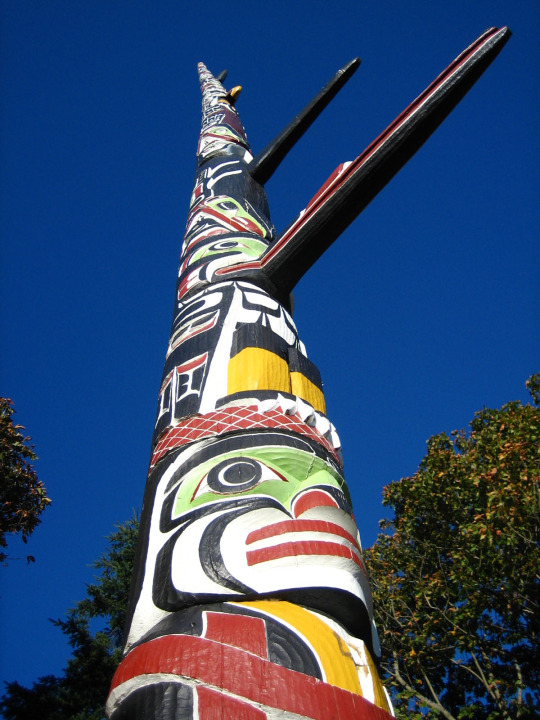
Add more markings, give it an entire (true) second head or beak, make it taller... really, the concept is right there. The line's not particularly strong either, so it could use the boost.

Anyway, overall, this is a very strong line with striking visuals and a strong, straightforward concept. Aside from some inspirational vagueness, it's dang near perfect in my book.
95 notes
·
View notes
Text
The Sad, Sad Tale of The Druedain.

Amongst Tolkien's many, many Human peoples, the Druedain might be the saddest in my opinion.
Both for their current situation, their history that led to them to this point, their very real and tragic real life inspirations, and the way everyone still alive, Drunedain, Numenorean, and everyone else has forgotten their true history and it's signifigance.
The Druedain's origins go back to the First age, where they(or the ones of them who wandered west into beleriand at least)were one of the Human people who fought against Morogth on behalf of the Valar, and upon the war's conclusion, they like all the rest of these Humans were given the name Edain, and many wonderous gifts.
Long life, massive size and strength compared to regular folk, and an island paridise kingdom to live in.
They called this land Numenor, named Elros, son of Earendil as their first king, and settled their new home, and so, these disparate and formerly different men of many origins joined together and mixed, becoming the Numenoreans.
And the Dru who joined them became the Druedain, one of the founding people of Numenor.
We don't know how much the Druedain intermarried with the rest(being the only ones that were visually distinct from the rest by the end) but given they and other men intermarried already in the first age(Earendil and all his descendants have Dru blood in their veins for examole), it's rather certain that enough did that by the time Numenor fell, most if maybe not all had at least one Druedain ancestor.
Whatever the case of that may be, both in Arnor and Gondor alike, the legacy of the Druedain(The great hunters, scouts and trackers of the Numenoreans) live on in the form of the rangers of North and south, both groip with incredible skill in all related to stealth, wilderness survival and hunting.
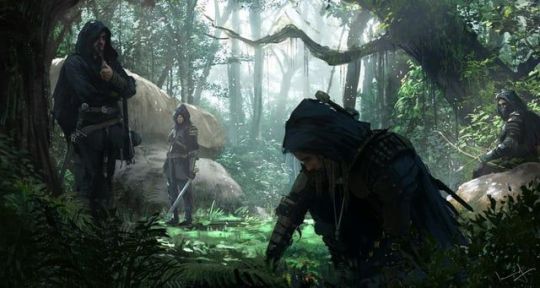
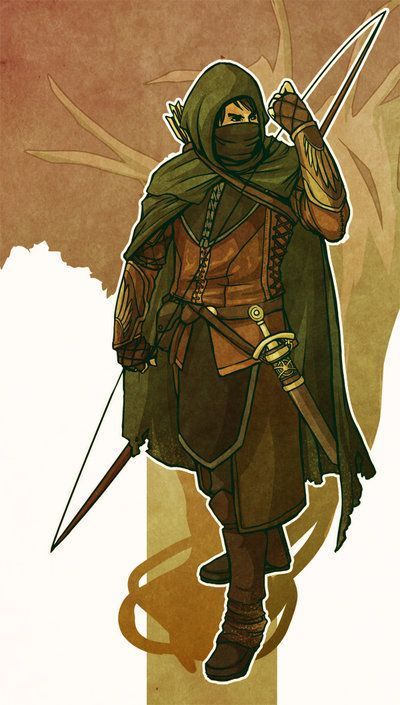
The skills of the wild that Aragorn displays was not learned just from personal experience. It, and the skills of all of rest of Dunedain, north and south were a distant, distant descandants of the Druedain's far greater, passed down through the ages until finally it ended up here, at the end of the third age.
Humanity is in truth, all one people, not many. They were split apart by unnatural means, and it is when Men combine their strength rather than let differences divide them, that they are truly strong.
But divided they were, for when the Numenoreans made contact with the outside world anew, after countless years of iaolation, the Druedain foresaw that their brethren would eventually fall to darkness, and so as they grew darker and darker, the Druedain began to sail back to Middle Earth, quietly, and rejoining the rest of the Dru, who had not left middle earth for Numenor.
And here we get into a usually overlooked tragedy, for during the dark years, when Sauron worked in Middle Earth, one of the people who opposed him and his were the Dru, now forever renamed the Druedain.
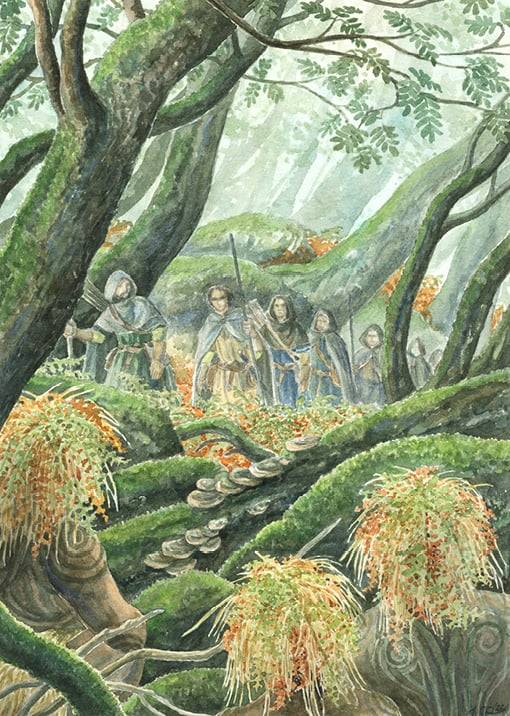
The image most fans have of Druedain was Tolkien obviously drawing inspiration from various primitive, tribal societies that Europeans encountered across the world during the age of exploration and colonization.
But that's not actually true, for the Druedain were inspired by two things, the first being the real life Woses, the mythical wild men of Europe's still untamed wilderness in medieval times.
But the second was the now forgotten native peoples of Europe, who nobody remembers anymore. And there are a lot of those, and most don't care to remember them any more.
For all the minorities of Europe who survived up to this day, many, many, many more were snuffed out forever by Europe's many waves of immigration and conquest, and nobody remembers them anymore, their culture forgotten, their languages dead, and whatever they made torn down and replaced by those who took their lands from them.
And so it is with the Druedain. For the state we see them in now, is not their "Natural" state so to say.
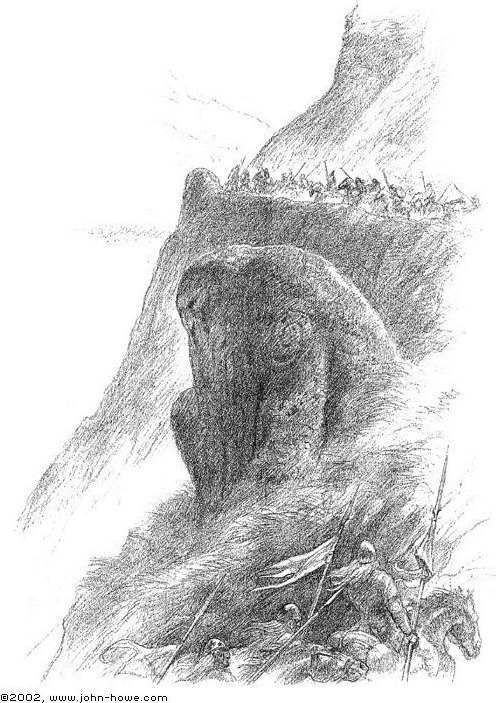
For the Druedain were also the true heirs of Numenor, as much as the Gondorians and the Arnorians ever were, and when they rejoined their distant kin, they helped them create a great and powerfull society, capable of raising massive and expertedly carved stone statues all across the lands that would one day become Rohan.
These are all that remains of their people's golden age, for these men who fought Sauron and his forces during the Dark years, were in turn conquered by another people who served sauron, and in turn took their lands from them, and built over their homes, and claimed rulership over these lands.

The ancestors of the oathbreakers of Dunharrow, drove the druedain into the hills and forests, where they were forced to live on nothing but hunting, and there they slowly forgot their roots, and were forgotten by all others.
Knowing all of this, it completely changes a lot of one's understanding of this People's oath to Isildur, and their ultimate rejection of it.

"Thou shalt be the last king, and if the west prove mightier than thy Black Master, this curse I lay upon thee and thy folk; to rest never until your oath is fulfilled. For this war will last through years uncounted, and you shall be summoned once again ere the end."
And such was the power of this oath, that upon breaking it, it destroyed their very spirit, and they fled and they hid in the mountains and dwindled and became fewer and fewer, and as the Druedain, they lost their homes, but not to sword, but their own cowardice and the gruesome power they had brought down upon themselves.
It's a very good tale, but when you know the background of all men, it becomes intimately intertwined with Tolkien's themes.
For what Isildur asked the mountain men, was to uphold their oath to fight sauron, and by doing so, earn redemption for their previous acts and crimes they did under his name.
And they refused to repent for their wicked ways and deeds and redeem themselves, and so they were cursed and destroyed... By a kinsmen of the people who's land they took by might and evil deeds.
There is something remarkably fitting about that.
However, justice did not heal the Druedain's wounds, for they did not come forth to join Elendil and Gil-Galad to fight sauron, as their ancestors had against Morgoth.
Instead they hid in their forest and hills, until such a time that they would be called upon once more, NOT by their kin, but a people who they had a personal and very real grievance with the Rohirrim.
For the Rohirrim became the stewards of their former lands after many other came and went, and they did not have a good relationship with the Druedain eitger, mistaking them for beasts or monsters, and turn hunting them...
But in the end, despite this, these two were able to make peace, and common cause, and bury the hatched. For though not direct kin as they were with the Gondorians, they were still both Human beings, they both fought evil, and by doing so, they both managed to survive and see another day and Age of peace and hope.
The tale of the Druedain is one of eternal sadness, but withouth hope. But it is a harsh reminder that important things, and people ARE forgotten. Good people can, and have been defeated, and evil folk can and have taken that which rightfully was theirs.
It's a bittersweet ending, like most things in the Legendarium.
#druedain#lord of the rings#the silmarillion#tolkien's legendarium#meta#numenoreans#edain#numenor#men of dunharrow#oathbreakers#rohan#rohirrim
9 notes
·
View notes
Text
I saw a post today that gave me pause and I’m just gonna explain my thoughts on it

So. Judging by the teehee, this is meant to be inflammatory, but I don’t wanna attack the person who posted this, just their argument, and I figure the best way to go about it is by analyzing the games’ varying respect and prejudice towards cultures, and the history of anthropology:
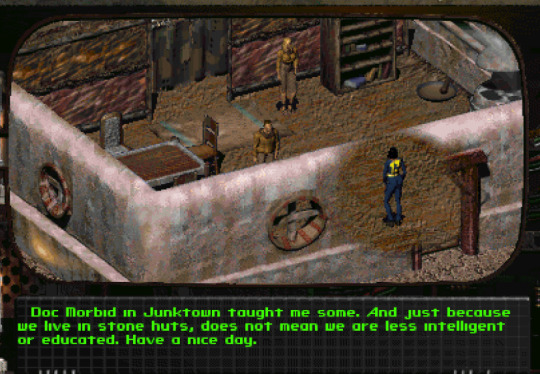
First off, “tribal” is just used as shorthand for low-tech in the fallout fandom, with the average white player not aware of the racist connotations, especially since European culture has relied on it as a term to delegitimize groups by making them sound “petty, smaller, and distant from our own way of life.”
Now, in fallout 1, the low tech cultures are actually handled with a degree of respect, something that the rest of the series did not follow the example of. The main two that come to mind are Shady Sands and the Khans, who came from vault 15. The experiment there was putting people from vastly different cultures and ideologies in a cramped environment over capacity to create conflict and see how it would be resolved. In the end, the vault dwellers agreed to avoid all-out war by opening the vault and going their separate ways, with these two cultures being half of the four that left.

Shady Sands’ culture is a mutation of something Dharmic, maybe Hinduism or Buddhism, but all that’s left is the concept of Dharma, now changed into a mythological figure. It’s referenced by a few townspeople in exclamations and sayings, but not expanded on much.
Upon starting the radscorpion quest, if you act surprised that Razlo (the village‘s doctor) is so well-educated, he takes offense and says that living in stone huts doesn’t make you less intelligent or uneducated before cutting the dialogue tree short.
The khans lack much characterization in this game, ultimately being defined through their aggression and emphasis on “taking back what we deserve” from shady sands, who used the G.E.C.K. to make fertile farmland. Some use guns, but most of them rely on spears in combat.
Very little is done in 1 to trivialize or delegitimize these people, especially since the Khans’ continued existence makes them a bane on the region, and Shady Sands has a chance at becoming one of the most powerful forces in the region.
However… 2 is where these things begin to change.

Fallout 2 derives inspiration from the book “Earth Abides”, especially the message that in a post-apocalyptic population, every life carries critical knowledge that could be lost for centuries if not taught properly. We see the aftermath of that idea in the Oregon tribes, where people have lost their ties to the old world and started new cultures.
This idea isn’t bad, I think it fits the tone of fallout for the old world to become something mysterious and forgotten, or a cautionary tale for new cultures that arise. It’s the execution that raises problems, as this is the first game in the series to create that “tribal means low-tech” shorthand that has so many bad connotations. Worse, the aesthetics of these cultures now borrow heavily from stereotypes, the whole “Hollywood natives” idea covered in face paint and “exotic” attire.
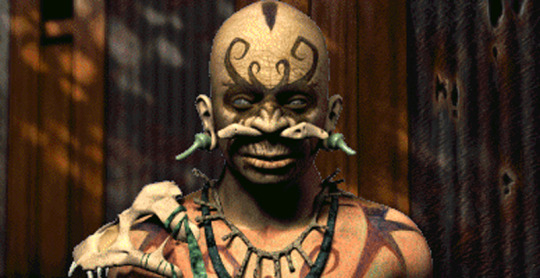
The game’s narrative mostly forgets about these cultures and considers them insignificant compared to the western-style cultures you encounter on your quest. Even when it does focus on them positively, there’s a tinge of “noble savage” tropes being put into play.
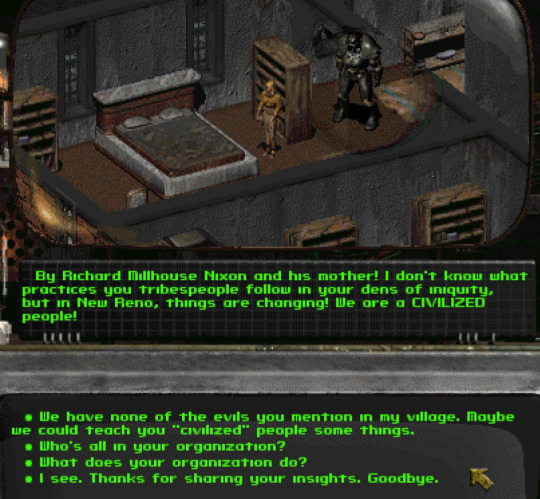
Which brings us to the next entry: fallout 3
In the base game, the only two example that comes to mind is Crow, a “tribal shaman” who “traded in his loincloth for proper armor.” He speaks in allegories and gives you a helmet “made from a spirit of the wind” (an eye-bot) if you accomplish his quest. He’s not particularly notable, but point lookout is where they emphasize things and go down a much worse route.
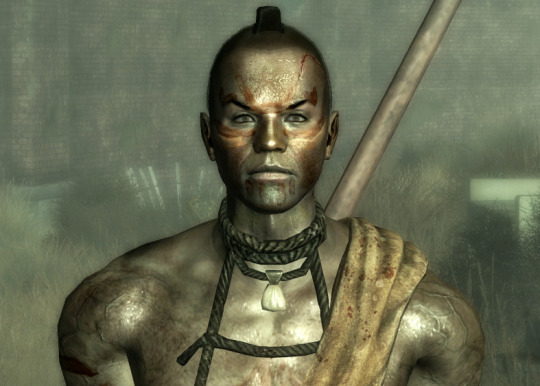
The point lookout tribe is portrayed as foolish, worshipping “punga fruit” and interpreting a preserved psychic brain as a deity. Their rituals involve hallucinogens and a surgery to remove a portion of the target’s brain, often killing or disabling the one who partakes in it.
It ties into some ideas early anthropologists had, such as the idea that nature worship, animism, and similar spiritual concepts were signs of a “primitive” culture that would “evolve” to be monotheist over time.
Finally, we look at New Vegas.

New Vegas doesn’t bring up the tribes in the base game much, beyond mister house “civilizing” them and forcibly erasing their cultures to fuel his fantasy of making Vegas the way it was before the war. Honest Hearts delves into them more and in a way that’s been heavily criticized.
The three tribes the DLC focuses on are the dead horses (the only part-indigenous faction in the game based on the “some folk from the res” line), the sorrows, and the white legs. Both the dead horses and the sorrows are led by Mormons who are proselytizing them, and we’re never given an option to truly criticize this.
The sorrows are especially infantilized, and their “innocence” is treated as an important thing, with your choices either preserving or ending it. The dead horses view the outside “civilized” world as strange, with comments about your use of caps as currency being strange, vehicles being unreliable, etc., all used to fit the idea of a technophobic, superstitious culture rather than bring up dialogue. The white legs are given no culture beyond violence and chaos.
Now that we’ve gone over the “tribals” in fallout, I want to talk about anthropology as a field. Its early European practitioners primarily viewed it as a way to further white supremacism, painting other cultures and races as “primitive” and needing to be brought to the white man’s level.
The field has come very far since those early 1800’s ordeals, but elements of it remain, such as anthropologists studying cultures in undeveloped regions to learn about pre-historic humans, refusing to acknowledge that these people are not in a cultural stasis and have been developing their cultures as well for thousands of years. It’s a field that’s important, studying the origins of humanity and how cultures develop, but it is tinged with white supremacism and eurocentrism.
If a genuinely good anthropologist wrote for fallout, these “tribes” would be much more distinct. We would see different funeral rites, different diets, different values, different aesthetics, all things meant to emphasize the way these people pursued different things for survival, joy, and fulfillment.
But… that’s not the case. Instead, we see racist imagery, inaccurate shorthand, and offensive stereotypes repeated over and over with only some variations, almost always tying into anti-indigenous tropes. If it were written by someone who valued anthropology, sociology, cultural history, or psychology, we would see far more variation than we do in-game, and far less racist imagery.
Fallout has always been written by people lacking diversity, often being made by teams of American white men, with the occasional woman or minority included. This lack of diversity stagnates their writing and understanding of culture, as the only one they see is the one they’ve surrounded themselves with, with no knowledge of others beyond shallow stereotypes.
8 notes
·
View notes
Text

[Source: This slide was presented by University of Alberta professor Cathy Blackstock at the 2014 conference of the National Indian Child Welfare Association. It compares and contrasts Western and First Nations perspectives.]
...
However, to erase the Blackfoot influence on this theory is to support systemic racism and white supremacy, whether unconsciously or not. Beyond the historical invisibility, there’s the fact that Maslow’s hierarchy distorts and inverts the point of the Blackfoot worldview. You’ll note that self-actualization is the base of the First Nations tipi (not a hierarchy, by the way… we’ll talk about the symbolism of the tipi in my next blog, which will include interviews with Blackfoot elders), not the peak. After “self” comes community, which is the purpose of becoming an actualized human being—to be of service to our communities as independent webs of humanity. And above community, reaching toward the expansiveness of the sky, lies cultural perpetuity, or the idea of sustaining cultural values across space, time, and generations.
The Blackfoot belief is not a triangle. It is a tipi where they believe tipis reach to the sky.
Self-actualization is at the base of the tipi, not at the top, and is the foundation on which community actualization is built. The highest form that a Blackfoot can attain is called “cultural perpetuity.
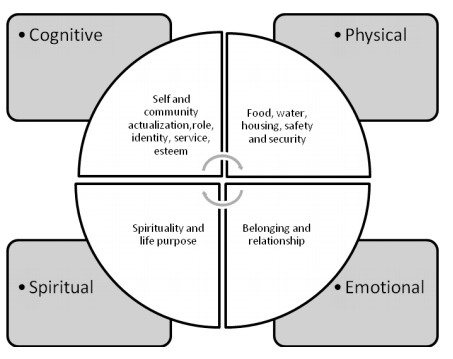
Cross presented in 2007 at a keynote that Western views are linear and native and tribal views are relational:
- Fluid, cyclical view of time
- Each aspect of life is related
- Services aim to restore balance
- Interventions may not be directed at “symptoms”
- Underlying question is “how?”
Blackstock explained cultural perpetuity as something her Gitksan people call “the breath of life.” It’s an understanding that you will be forgotten, but you have a part in ensuring that your people’s important teachings live on.
...
“Blackfoot people have their own systems for developing new knowledge in traditional ways,” says Ryan Heavy Head, one of the researchers at Red Crow. “It’s less focused on categories and more interested in how things come together.”
Do white people have anything they didn't just steal? Asking for a friend.
#maslow's hierarchy of needs#abraham maslow#cultural appropriation#white supremacy#colonialism#decolonization#indigenous knowledge#indigenous culture#indigenous#psychology#sociology#blackfoot#siksika#capitalism#individualism#consumerism#knee of huss
32 notes
·
View notes
Note
when does digging up a body go from grave robbing to science? cause I wanna dig something up know for science but im not sure if I can yet at least in span of time .
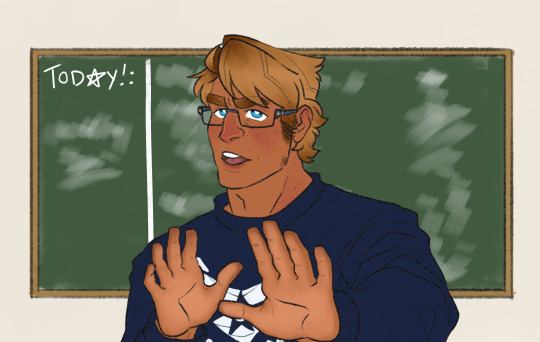
"I'm gonna have to stop ya right there dude. First off, if y'think you've found human remains, contact a local authority such as your police department. If it ends up bein' something of archaeological importance, an archaeologist or forensic anthropologist may be called in later. If you think you've found a cultural artifact and you're curious, I'd suggest leavin' it where ya found it, but taking a picture if yer so inclined. You could try n' ask a local museum or university about it. I've seen some with websites that have links to identifying finds or contact info for an expert.
"But to answer your question...well, it's somethin' we still debate in archaeology today! I've heard some make the joke that it becomes archaeology 'once no one cares about the remains anymore,' but that ain't necessarily true. It ain't about time, it's about permission. Grave robbers often just dig stuff up for money or for collecting. Us archaeologists gotta be professional about it - though plenty ain't - and we need to be conscious of permitting and allowance. Consent is king, kiddo!
"I speak mostly fer American archaeology, but here you gotta go through the State Historic Preservation Officer for a permit for any type of site. I'll use Texas as an example, but the Antiquities Code of the state of Texas requires a project to have a permit - and any other permissions necessary - before the archaeologist can even set foot on the land. The SHPO can reject a permit, too. Then it's a whole process of accreditation with other professionals, and then you can bring on student or volunteer workers. And these staff have to come on after signing contracts. Archaeology is waaaaaay more paperwork than it seems!"
((Alfred has forgotten to mention Tribal Historic Preservation Offices (THPOs) as well. A THPO is necessary if the find is potentially indigenous in origin. If you really want to try your hand at digging, that's perfectly fine! Try your backyard (with permission) first. You can look up or ask us how us dirt surgeons set up units and try to take a methodical approach to survey and excavation. But permission, I would say, is the biggest takeaway here.))
#ask archaeology boy#archaeologyfjones#from the editor's desk#got a bone to pick#hetalia#hetalia ask blog#aph america#hws america#alfred f jones
39 notes
·
View notes
Note
can we hear about the fictional species :3?
awh fuck I do gotta type something out don't I? Alright lemme try and break it down without rambling. I have 0 visual examples so just, bear with me, Ill try and use some inspirational art from back when I made them to get the look across. But here we go!
So I have a sci-fi setting named "Cosmosphere" in which I put all my sci-fi flavoured ideas and stories. I've written a short story about an android girl falling in love with a buff mechanic lady, set a tabletop game in it, and generally use it as a dumping ground for all things spacey that I like. Within Cosmosphere there's a few key players on the galactic stage as far as alien species go. There's the beetle-like Prok who's entire society is built around cartography and the want to chart the entire universe, the nomadic and pachyderm inspired Jaatani who's arid home planet was destroyed by a collapsing sun so they now inhabit a massive planet sized fleet of starships, and the noble Rook, sentient machines native to the zone of space known as the Cosmosphere itself who hail from a long forgotten purpose.
But we're not here to talk about any of those guys! We're here to talk about the very first species I ever designed for the setting, the Fenrii (Fen-ree). Hailing from the frigid world of Fenrai (Fen-rye) these large humanoids are much much farther along in their evolution than we humans. Because of this both their biology and culture are very old and run deep within their science and society. When I say much farther along think a million years or so of evolution, some of it forced via outside factors. But where to begin about these genderless giants? Lets start with physical characteristics.
The Fenrii, as described before, are tall for the most part humanoid in their general shape. What sets them apart is their horns, hair growth, and thick leathery skin. The Fenrii evolved from a very promenant predator species on their homeworld that was well adapted to surviving the harsh cold climate and rocky mountain ranges made of obsidian and volcanic rock left behind from long extinct flows. Think of your average fenrii as a person anywhere between 6 and 8ft tall with horns of varying sizes and lengths, usually with very thick hair on their head and body, and a more animalistic face. (A very good example and a large source of my inspiration for them are the Jotun from the Banner Saga series of video games. A series I havent played but love the look of, example below:)

(Where the fenrii differ from their inspirational counterparts is they have slightly more broad and almost bovine facial features. Particularly wide flat noses and eyes that sit more far apart than your average human.)
Because of their predatory ancestry the Fenrii also possess 2 enlarged sets of canine teeth along with thick sharp finger/toenails. Natural weapons leftover from the days when their animal ancestors stalked the mountains and cave systems for prey.
Now that we've gone over what they look like, lets get more into that biology! The Fenrii have always been a genderless species. Due to the perilous nature of their homeworld's climate one of their oldest adaptations was that any member of their species can produce offspring. Another defense against the harsh environs was that they evolved as oviparous mammals, laying large thick-shelled eggs that took only around 7 lunar cycles (thats 7 months in Cosmosphere speak) to gestate and hatch as long as they were properly incubated. So where did the problems emerge? Well, because of their tribal roots, fenrii society views bringing offspring into the world as a very sacred thing. for thousands of years the tribes of Fenrai controlled their birthing rates rather strictly as in accordance with their spiritual values, but as science advanced in their society, so did their ability to diagnose issues within their ways of life. Fenrai has no central government, nor does it really have nations, what it does have is bastion tribes that have either made peace with or absorbed other tribes across their history. These tribes largely run on communal village structure, despite their large size. I bring this up because when it was discovered that their birthing practices were having a massively negative impact on their physiology, changing it was one of the only things all these tribes agreed on unanimously.
You see, back when they were animals and eventually a more primitive species, the fenrii's ancestors reproduced rather frequently. Only one egg could be laid at a time by a single member of the species, but packs and early tribal societies would make egg clutches out of groups of multiple eggs laid by multiple members. The eggs would be looked after by the whole tribe to ensure as many of them as possible would hatch, and this practice was repeated roughly 3-4 times an orbital cycle (year). However, when their society began to adhere to stricter birthing regulations, the length of time and number of generations born with these practices began to cause conflict in their evolutionary cycle. The core issue was as followed: The eggs the Fenrii were producing changed very little, but their own physical attributes did. No longer were they hardy predators, and their bodies more often then not couldn't take the stress of carrying and then laying the eggs they reproduced with. So a culture spanning initiative was formed, to find a way to ensure a future for the Fenrii through alternative birthing practices. At first it was far from perfect. Some of the tribes simply opted to encourage hastened birthing which cost many would-be parents their lives in their attempts to have more children. After nearly 3 human centuries of carefully restructuring their societal views and cultural practices around the subject, an answer was found.
Deep within the volcanic caverns of Fenrai a form of super-mycelium (its sci-fi lemme have this) was discovered to have the interesting property of being able to self-replicate via cloning. However, through rigorous testing, it was also discovered to be able to reproduce OTHER material other than itself, genetically identical and healthy nearly any time. Work was put in to refine the process of feeding genetic material into this mycelium to be able to produce a living breathing Fenrii from it. After decades of work, they succeeded, and thus the brood stones were born. By refining the mycelium's reproductive properties the Fenrii were able to create synthetic eggs capable of taking genetic material from either one or more hosts and create a prepubescent copy of that individual, healthy and ready to live a life of their own. This breakthrough was heralded as the most important scientific work in Fenrii history, and was adopted into the cultural practices of the various cultures of Fenrai over the next few centuries.
The most common practice among Fenrai society is that two or more Fenrii who have been wed will decide to have a child and offer a single finger to a brood stone. After a gestation period of 10 lunar cycles a child will be produced from the stone, hatching much like an egg, with genetic characteristics of all of its parents. Fenrii society is welcoming to all forms of self expression, and its not uncommon to find Fenrii across the stars identifying in a myriad of ways. I hope this wasnt too messy, im really bad at like, typing stuff out in one go, but I tried to make it as understandable as possible. I really like my sci-fi setting! And im flattered as hell people wanted to hear about it. Tagging @puppydragonbite cause it said it was also interested in my ramblings. Thanks for reading! (and thanks for the ask <3)
#my stuff#my writing#glad I got to talk about this!#I promise it sounds better when I talk about it physically
3 notes
·
View notes
Text
Krenko’s Guide to Creature Types: Orc

Art by Darren Tan
What is a Orc (flavorfully)?
Orcs are basically larger, stronger, more ferocious Goblins. They’re known for being brutish, ferocious, impulsive, stupid, and basically everything Goblins are except that they’re big enough to back it up on an individual level rather than needing to swarm. The reason they’re so much like Goblins is that classic Orcs ARE Goblins and it wasn’t until 1977 when Dungeons and Dragons decided they were different. Since then, the modern idea has been that Goblins are the small ones, Orcs are the medium ones, and Ogres, which are also historically the same thing, are the large ones. While this line of thought has mostly been accepted into modern culture, it’s not a hard and fast rule and it’s often not codified at all in things that aren’t directly from the D&D lineage. Orcs just being big goblins was extremely obvious in the early sets, where cards like Orcish Librarian and Orcish Settlers used the commonly repeated Goblin joke of being really bad at their stated job.
Orcs in Magic: the Gathering appear sparingly on Dominaria and heavily among the Pirates of Ixalan and the Mardu/Kologhan Clan of Tarkir. Population density on Arcavios is unclear, but there are a few at Strixhaven University. As a D&D race, they’re also featured in Forgotten Realms sets.
What is an Orc (mechanically)?
Orc is a racial creature type, usually for Black or Red creatures with power and toughness in the 2-4 range. Forgotten Realms Orcs are often other colors, but Forgotten Realms does a lot of weird things to match the D&D flavor. All the Orcs in MtG worlds are Black and/or Red, at least.
Orcs have a high instance of the Dash ability, but this is primarily due to being so heavily focused on the faction it belongs to. Most Orc abilities seem to be based more on their faction than the identity of being an Orc, though they do seem to have a higher than usual instance of cards that use drawbacks to get more power.

Can I make an Orc deck?
Despite very little Orc tribal support or synergy, Orcs come with enough raw Red/Black aggression that putting a pile of them together to turn sideways is perfectly viable. That said, if you actually want to make a competent deck full of Orcs, you’re better off ignoring Orc tribal and either going Pirate tribal or making a Mardu/Khologan faction deck. You’re going to get a lot of Orcs either way, but the best support Orcs are cards like Dire Fleet Neckbreaker and Warbringer that support faction rather than all Orcs. The only actual Orc Tribal cards, Orc General and Orcish Captain, aren’t even better than the artifact ‘choose a creature type’ rewards.
In Commander, you’re using Zurgo Helmsmasher. He’s one of the best Orcs on his own and he’s in all the colors you actually care about. Yes, there are other Legendary Orcs, but the only other one with an argument is Sek’Kuar, Deathkeeper, and the White splash is far, far better than the Green splash here. With the handful of Orcs printed in Commander Legends, Orcs actually have a bit extra going on in a multiplayer format.

Is Orc a good creature type?
Orc is not doing great. Their identity of mid-sized black/red creature is interesting, but they don’t have enough in there to call their own. They operate on the ground between Goblins and Ogres without any traits to really set them apart from either, but Goblins can get as big as Orcs and Ogres can get as small as them, so Orcs are just fighting for design space with both. Orcs having drawbacks to gain more benefit is a good idea, but it’s certainly not being leaned into, and for whatever reason we’re seeing Orcs in Blue and White now, which just muddies what an Orc is even further.
Now, people like Orcs, I get that. Thanks to D&D inspiring Warhammer and that being blatantly ripped off into Warcraft, Orcs have a huge space in modern culture, but they’re just not doing anything in Magic. Wizards does seem committed to printing more Orcs, but this commitment doesn’t seem to include a willingness to define the Orc as something other than a Goblin/Ogre, and Ogre is historically just Orc in French.
My personal opinion is that for gameplay purposes Orcs and Ogres should just be the same tribe, but that’s not a fight I’m going to win, so I think Wizards needs to stop printing off-color Orcs and lean more heavily into the idea of Orcs as a tribe with a lot of strength and a lot of drawbacks. Mardu Outrider, which doesn’t even exist in paper, feels like a perfect Orc to me and I’d love to see more like that.
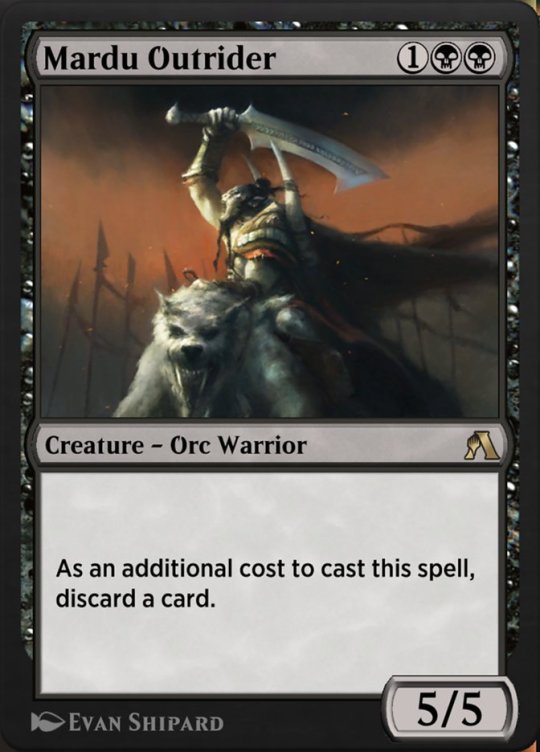
29 notes
·
View notes
Text
You wanna know why I miss the Archie Sonic comics?

Because if Archie Sonic were still around, this guy would be called something like Notorious P.I.Geon. He would appear for three panels in a Sonic Superstars adaptation and make lame gags about his weight, being a bird, or both. He'd make an ill-fitting reference to 70s pop culture like "He ain't heavy, he's my brother!" Then he would vanish.
Then Ken Penders would use him three years later in a single issue to further whatever crazy political BS drama he has planned that week and play him completely straight as a revered tribal leader that happens to be named Notorious P.I.Geon. He would say some vaguely offensive nonsense and prop up Knuckles or King Acorn or Locke or whoever Penders' focus was that month.
He would be forgotten for ten years. Then Ian Flynn would bring him back. Now he's the leader of a coalition of Bird People opposing the Battelkukku Army or whatever they're called and on a council with Longclaw and an expy of the owl from the anime. He would have a tragic backstory and get a fight scene that goes absolutely hard as F*CK that everyone references whenever the character comes up in casual conversation.
That's why I miss the Archie Sonic comic. I'm sure IDW is great, but it can never have that exact flavor of insane that can only come from decades of no corporate oversight, a potent mix of writers that don't care, writers using it as a vehicle for their own personal issues, and writers that care much more than they need to, and a continuity based on two long dead cartoons held together by duct tape, band-aids, and the fevered dreams of madmen.
17 notes
·
View notes
Text
“The power and centrality of the first woman-God is one of the best-kept secrets of history. We think today of a number of goddesses, all with different names—Isis, Juno, Demeter —and have forgotten what, 5,000 years ago, every schoolgirl knew; no matter what name or guise she took, there was only one God and her name was woman.
The Roman lawyer Lucius Apuleius was skillfully recycling the whole compendium of contemporary clichés in his portrait of "the Goddess" as she spoke to him in a vision:
I am nature, the universal mother, mistress of all the elements, primordial child of time, sovereign of all things spiritual, queen of the dead... Though I am worshipped in many aspects, known by countless names, propitiated with all manner of different rites, yet the whole round earth venerates me.
Later ages dismissed accounts of Goddess-worship as "myths" or “cults." But since Sir Arthur Evans, discoverer of the lost Minoan civilization at the turn of this century, stated that all the innumerable goddess-figures he had discovered represented "the same Great Mother... whose worship under various names and titles extended over a large part of Asia Minor and the regions beyond," modern scholarship has accepted that "the Great Goddess, the 'Original Mother without a Spouse’, was in full control of all the mythologies" as "a worldwide fact."
Nor was this an isolated or temporary phenomenon. Commentators stress the prominence and prevalence of the Great Mother Goddess as an essential element from the dawn of human life. From its emergence in the cradleland of the steppes of southern Russia her worship ranged geographically throughout the Mediterranean, the Indus Valley, and Asia as far as China, to Africa and Australia. Historically the span is even more startling:
25,000-15,000 B.C.—with the so-called "Venus figurines" of stone and ivory in Europe, of Nile mud in Egypt, "the Great Mother... bursts on the world of men in overwhelming wholeness and perfection."
12,000-9000 B.C.—in Dolni Vestonie, iechoslovakia, and Shanidar, Iraq, ceremonial burials of bodies coated in red ocher, commonly associated with Goddess worship.
7000 B.C.—in Jericho, the first shrines to the Mother Goddess.
6000 B.C.—the village settlement of Catal Huytik in Turkey, a site of only thirty-two acres, contains no less than forty shrines to the Goddess, in three incarnations as maiden, mother and crone.
5000 B.C.—a statuette from Hacilar in Turkey shows the Goddess in the act of making love.
4000 B.C. —the first written language appears on the temple of the Goddess under her title of Queen of Heaven at Erech (modern Urak) in Sumeria.
3000 B.C.—she now appears everywhere in the known world, in statues, shrines and written records.
200 B.C.—tribal Celts send their own priests of the Goddess to the great sacred festival of Cybele in Anatolia.
A.D. 200— at Tralles, in western Anatolia, a woman called Aurelia Aemiliana erects a carving at the temple of the Goddess, recording that she has duly performed her sexual service (sacred intercourse in honor of the Goddess) as her mother and all her female ancestors have done before her.
A.D. 500— Christian emperors forcibly suppress the worship of the Goddess and close down the last of her temples.
As this shows, the sacred status of womanhood lasted for at least 25,000 years— some commentators would push it back further still, to 40,000 or even 50,000. In fact there was never a time at this stage of human history when woman was not special and magical.
As the struggle for survival eased by degrees into the far harder struggle for meaning, woman became both focus and vehicle of the first symbolic thought. The French archaeologist Leroi-Gourhan solved a riddle of the early cave paintings that had defeated anthropologists of more puritanical cultures when he revealed that the recurrent and puzzling "double-eye" figure was a symbol of the vulva. Similarly in a remarkable sculpted frieze of animal and human figures at Angles-sur-l'Anglin, the female forms are represented by pure abstract triangles of women's bodies, with the sexual triangle prominently emphasized.
How did woman assume from the first this special status? One source of it was undoubtedly her moon-linked menstruation and the mystery of her nonfatal yet incurable emission of blood. Another was her close and unique relation to nature, for as gathering gave way to planned horticulture, women consolidated their central importance as the principal food producers. But the real key lies where the exaggerated breasts and belly of the earliest images of woman direct us to look, in the miracle of birth. Before the process of reproduction was understood, babies were simply born to women. No connection was made with intercourse (to this day Australian Aboriginals believe that spirit children dwell in pools and trees, and enter any woman at random when they wish to be born). Men, so it seemed, therefore had no part in the chain of generation. Only women could produce new life, and they were revered accordingly: all the power of nature, and over nature, was theirs.”
-Rosalind Miles; Who Cooked the Last Supper? The Women’s History of the World
#radblr#radfem#radical feminism#radical feminist safe#radical feminists do interact#radical feminists do touch#radical feminists please touch#feminism#feminist literature#who cooked the last supper#herstory#womens history#radical feminists please interact#radical feminist community#radical feminist literature#radical feminist theory#radical feminst#feminist library
3 notes
·
View notes
Note
When did Jim unlock his Magika (Angor Rot variant) form? What would he look like? And what everyone's reaction, including Angor Rot?
Jim gets Magicka during his second clash with the assassin. It was completely unexpected but Blinky believes Angor putting his magical target on Jim is the cause. As for appearances, I say Stonebreaker Magicka is closer to Vasto Lorde Ichigo from Bleach in appearance. (I swear I can hear Here Cometh The Hour just thinking about it.)
Unnatural jagged horns, facial features closer to a skull with a narrow snout, mane of moss like fur, piercing stare and various tribal tattoos that are often linked to magic or death in troll culture. A grim reaper whose form belongs to a tribe long dead, buried, then forgotten.

Angor Rot's current state has gave Jim an affinity to Curse Type magic as well. Every spell that can cripple the body, mind or soul is now his to understand. Magicka caused a huge stir in the Trollmarket community.
A large chunk think it's a sign that Angor Rot shall face punishment for his transgressions. Some believe his tribe is reaching out from the grave to stop him. Whether to save his soul or condemn the assassin is unknown.
Angor Rot has a huge mix of feelings to Magicka. Mourning, fury, heartbreak, regret and loss. Why did the shapeshifter take his tribe's form? Is it a sign? Magicka's appearance has plant the seeds of doubt and rememberance.
For our gang, Toby helps turn everyone's view into a positive kind. If Jim can wield Curse magic then he can understand how to prevent, hinder, alter or break it. Toby's gravity curse would be dealt with quicker and benefit him a lot more such as transferring into other objects.
Magicka can now provide the knowledge to handle such issues. Blinky plans on making a book on curse breaking for healers to use. Jim will stay anonymous of course.
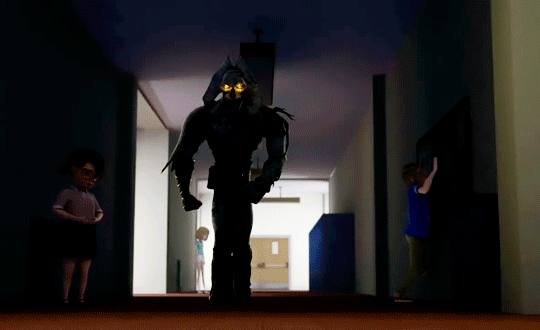
(Unrelated note. Autocorrect kept trying to turn 'Angor Rot' into 'Angoramon' so let me stick the idea of the troll assassin as a big fluffy rabbit in your head. I don't think anyone would be scared of him ever again. Angor Rot has become Angor Bun. 🐰😂)

#sonicasura#sonicasura answers#asks#cf8wrk4u us#tales of arcadia trollhunters#toa trollhunters#trollhunters#toa#tales of arcadia#angor rot#james lake junior#james lake jr#jim lake junior#jim lake jr#troll!jim#troll jim#omnitrix wearer!jim#ben 10#ben ten#ben ten series#ben 10 series
13 notes
·
View notes
Text
As a white 16 year old boy, adapting and participating in cultures you were not born into as a white person is NOT cultural appropriation and I'm really fucking tired of people on my side of politics constantly fighting about this.
So let me end the argument here, as someone SUPER unqualified to do so.
From my admittedly not very extensive research, white people are stupid.
It's okay, you can slow clap. It's pretty common knowledge. The term 'cultural appropriation' has shifted over the years into something I don't really like, and the reason why is pretty much just as simple.
A historically reoccurring tactic of colonists is to stifle the religion and culture of the people they're abusing so that it can't be taught or shared and forcibly replacing it with whatever they believe- most notably, it's usually Christianity or some variation of such. This leads the culture to be forgotten and buried and burned, thus massacring an entire people and their history in a barbaric yet terrifyingly efficient fashion. This has been accomplished historically by targeting children and trafficking them into slave labor/'modern religious boarding schools' and slaughtering them under the guise of 'teaching' them.
I feel it's important to note that the erasure of these cultures was not caused by people participating in them, but trying to snuff them out methodically.
Now that I've explained that, let me get back to the cultural appropriation thing.
Appropriation of something is supposed to be adopting cultural practices without understanding their significance or value, as is unfortunately the case with many native tribal practices that have been widely adopted into 'western culture' and done so ENTIRELY incorrectly. Instead of pointing this out though, I find that my flavor of liberal often accuses people genuinely trying to learn or celebrate other cultures of appropriating them when adopting their food or clothing or whatever, of whitewashing and diluting the cultural significance and so on.
Let me remind you that the reason so many cultures have been lost is because they were singled out and forbidden to be taught to others, as I pointed out a few paragraphs eariler.
So, to conclude this post, just my trivial, american high schooler understanding of how cultures grow and survive suggests that outsiders learning about other cultures is actually a GOOD thing, and that instead of yelling at each other for doing something rooted in different cultures despite being paler than snow, we should actually encourage people how to adopt these practices correctly- because, lets be honest. If you were afraid of being accused of appropriating traditions, would you bother to learn about them, or would you be entirely ignorant of their people and their struggle?
I guess my final point is that if I, your typical mountain white boy can understand this with no actual research outside of thoroughly enjoying social studies and world history, so can everyone else if they bother to think about it for more than two seconds.
#cultural genocide#cultural appreciation#world history#history#cultural awareness#colonisation#colonialism#cultural erasure
6 notes
·
View notes
Text
indigenous treaty rights
vimeo
Promised Land (2016) is an award-winning social justice documentary that follows two tribes in the Pacific Northwest: the Duwamish and the Chinook, as they fight for the restoration of treaty rights they've long been denied. In following their story, the film examines a larger problem in the way that the government and society still looks at tribal sovereignty.
"The film is about federal recognition, yes, but on a deeper level it’s about how to be an Indian in the modern world, how to fight even if you’re an elderly lady or a terminally ill man, how to take joy from the fight because of the friends you make, and most importantly, how to face death bravely and with honor, recognizing it as a transition and not an end. The U.S. will someday crumble into dust and be forgotten like all other empires. But cultures like the Chinook and the Duwamish will endure indefinitely, as long as there are those who love their ancestors and honor them with good work." - Indian Country Today
3 notes
·
View notes